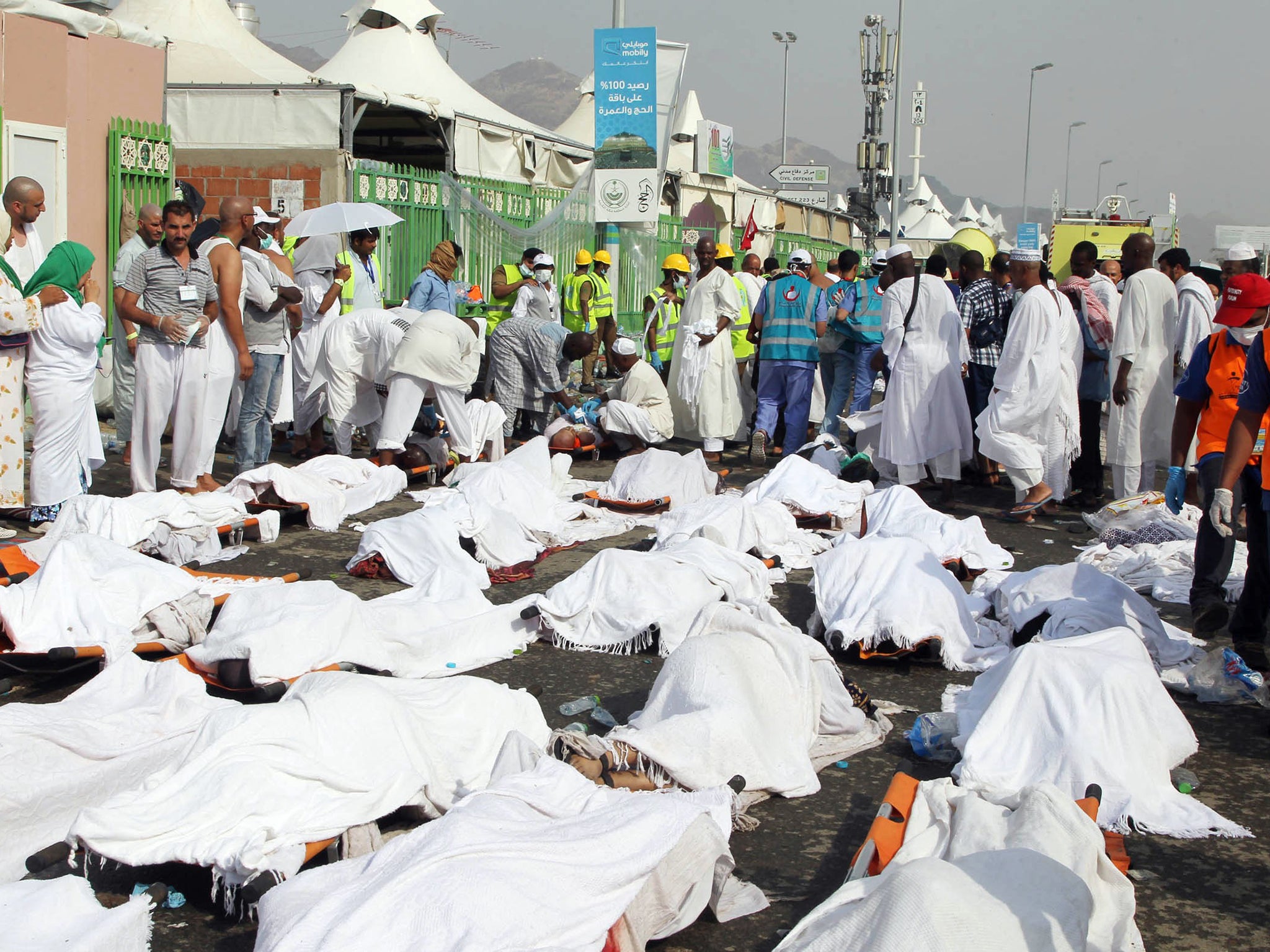Hajj stampede: Saudi authorities scramble to explain crush that killed 719 pilgrims
It is thought to be the worst tragedy to hit Eid in more than two decades

As the body count from the horrific Hajj stampede reached 719, the backlash started. Within hours, Saudi Arabia’s regional rival Iran had laid the blame for the deaths squarely on the heads of the House of Saud.
Saudi officials, by contrast, claimed “some pilgrims who didn’t follow the guidelines issued” may have been responsible for the sudden crush on the half-mile-long, five-storey Jamarat Bridge near Mecca. They also pointed to the extreme heat and fatigue of some pilgrims as potential causes.
As the authorities sought to deflect criticism for the worst tragedy to befall the annual pilgrimage in 25 years, Prince Khaled al-Faisal, the head of the central Hajj committee, provoked fury when he reportedly decided to blame “some pilgrims with African nationalities” for causing the stampede.
Tarek Fatah, an author, journalist and fellow of the Middle East Forum think-tank in Philadelphia, described the remark as a “display of Arab anti-black racism” in a message on Twitter that summed up the response of many on social media.
The new Saudi monarch, Salman, expressed his condolences and pledged a speedy investigation into the disaster – the second within two weeks after a giant construction crane came crashing down on the Grand Mosque in Mecca, the focal point of the Hajj, killing more than 100 people.
King Salman said he has asked for a review of “all existing plans and arrangements to improve the level of organisation and management of the movement” of pilgrims.
The death toll is at least 719, with more than 800 injured, but authorities warned that they expected the numbers to increase as they continued to count the bodies. A large proportion – at least 131 – were Iranians.
Iran’s Deputy Foreign Minister, Hossesin Amir Abdollahian, told the official Irna news agency that his ministry had summoned the Saudi envoy to Tehran for an official protest over what he called the “inadequate performance of Saudi authorities” in the incident. And Iran’s Supreme Leader, Ayatollah Ali Khamenei, issued an uncompromising statement: “The Saudi government should accept the responsibility for this sorrowful incident. Mismanagement and improper actions have caused this catastrophe.”
A number of other nations are believed to have lost citizens in the disaster, including Indonesia, although numbers were not confirmed. The Foreign Office in London was “urgently seeking information” after reports of the crush and estimates that between 19,000 and 25,000 Britons were in Saudi Arabia for the Hajj.
On the Jamarat Bridge, scores of bodies, dressed in the white garments traditionally worn during Hajj, lay scattered about as the injured were moved away on stretchers.
The giant structure allows 300,000 pilgrims an hour to carry out the “stoning of the Devil” ritual at Mina, on the outskirts of Mecca, which involves worshippers throwing stones and pebbles against three stone columns. The bridge was designed to ease the pressure of overcrowding and prevent people being trampled. It also houses thousands of tents where pilgrims spend the night.
The stampede happened after a surge of pilgrims at the intersection of two perpendicular streets as they were making their way towards an area overlooking the columns, according to the Saudi civil defence directorate. It said more than 220 rescue vehicles and 4,000 members of the emergency services were deployed to try to ease the congestion and provide alternative exit routes.
Deaths such as these have occurred numerous times during Hajj despite the use of surveillance cameras to limit the number of people converging on the site. The disaster is the worst to strike the pilgrimage since 1990 when at least 1,426 pilgrims perished in a stampede in an overcrowded pedestrian tunnel leading to holy sites.
Two survivors said the crush began when two waves of pilgrims going in opposite directions collided.
An Egyptian pilgrim, Abdullah Lotfy, 44, said: “I saw someone trip over someone in a wheelchair and several people tripping over him. People were climbing over one another just to breathe. It was like a wave. You go forward and suddenly you go back.”
Mr Lotfy said that having two flows of pilgrims interacting in this way should never have happened. “There was no preparation. What happened was more than they were ready for,” he said, referring to the Saudi authorities.
Worried friends and family took to social media in the hope of finding information about their relatives. Around two million pilgrims, including 1.4 million foreigners, are attending the Hajj. Sahri Jaffri, from Manchester, said: “News of deaths during the Hajj pilgrimage stampede is making me worry as my mom and her best friend are there. Please pray for their safety and for the others carrying out their pilgrimage too.”
Shahid Mursaleen, from east London, said his uncle and aunt, Mohammed Tariq Aziz and Jan Aziz, from Pakistan, had only narrowly avoided being caught up.
“They heard screams. They saw people on the floor, maybe who had internal injuries. They saw people lying on top of each other,” he said.
Join our commenting forum
Join thought-provoking conversations, follow other Independent readers and see their replies
Comments